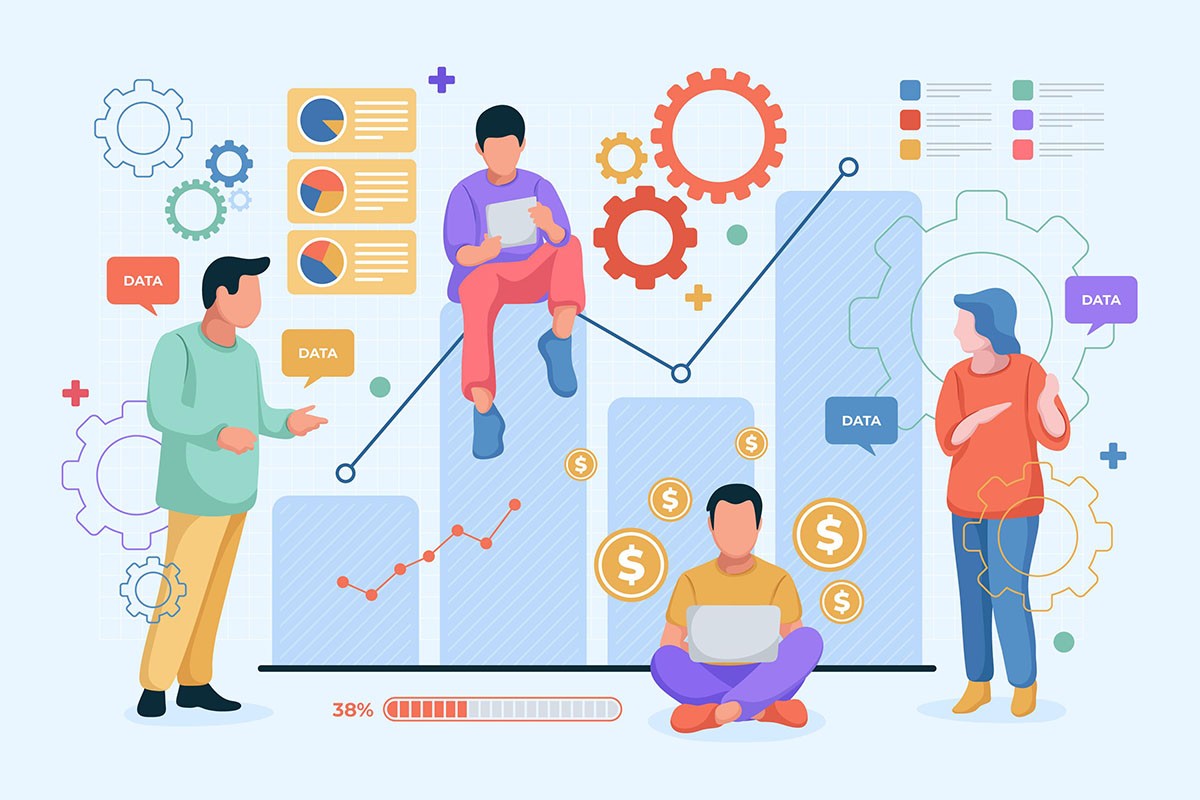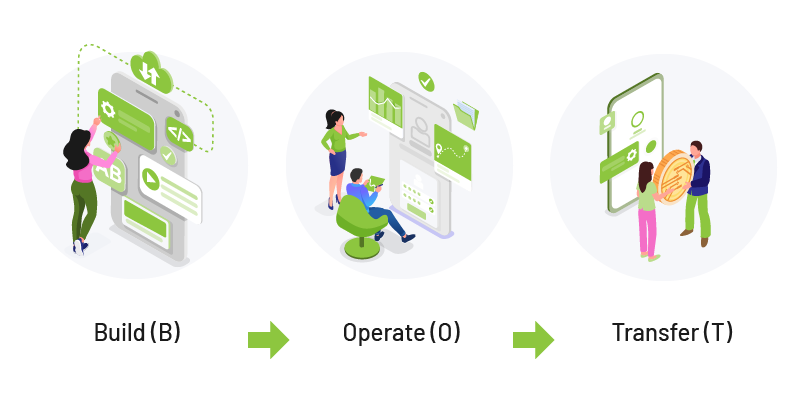Software development is a complex process that requires engineers to take specific steps to deliver the right software products. These steps are known as software development cycles (SDLC methodologies), and they typically include planning, creating product designs, developing, testing, and so on. The software development cycles take your project from ideation or planning to the last stage, operation, and maintenance. These phases remain the same in all software development processes, but software engineers may choose to implement functions in every phase in different ways.
There are many types of SDLC methodologies, but only eight out of these models make up our list because they are popular. However, all the SDLC methodologies aim to help software developers build high-quality software. When choosing the right software development model for a given project, developers need to consider a number of factors. These include business requirements, level of expertise required, budget and timeline.
Here we look at the 8 basic software development methodologies and models to help make a well-informed decision.
Types of Software Development Cycle (SDLC) Models
The most common SDLC models include V Model, Waterfall, Spiral Model, Incremental Model, Scrum, Kanban, XP, and RUP.
Waterfall
This model follows through all the phases in software development, from analysis, design, implementation/coding, testing, product deployment, and maintenance. Usually, every phase has a set of delivery deliverables that are strictly documented. These steps have to run systematically, and the next stage cannot begin before developers are through with the previous one.
For instance, analysis cannot be done during the coding or development stage as it should be completed early. Software developers cannot also test the product before the deployment stage is completed. This leads to unpredictable project outcomes and higher project risks as issues are not identified on time. Besides, testing in this model is rushed, and the cost of fixing errors is relatively high.
Waterfall model suitable for:
- Projects that need predictable budgets, timelines, and tighter controls such as government projects
- Small and medium-sized projects (such as developing simple websites for small companies) with unchanging and clearly defined requirements
- Projects utilizing well-known tools and technology stacks
- Projects that follow a wide range of regulations and rules, such as healthcare projects
Iterative and Incremental Model
As the name suggests, the SDLC is divided into several iterations and based on the Incremental model. In this case, new software models are added in each iteration with little or no charges to the models added previously. The software development cycle can be parallel or sequential. Multiple iterative development cycles make the project costly and lengthy, while parallel development increases delivery speed.
Since new software modules are added to the previous iteration, iteration development involves changes in each development iteration and evolvement. However, the software design is still consistent since each iteration is developed on the previous one.
From the beginning of the project, a complete specification is not necessary since the software product is distributed in parts. A few changes may also be made to the requirements during the software development process. But, it is important to define the necessary conditions from the beginning, even if the requirements cannot be entirely changed. This is more important for systems in incremental development since additional integration of the distributed parts of the software may result to be an issue.
In this model, altering some minor requirements may be necessary for the course of the development process. Thus, the SDLC model needs some participation from customers.
The model is more suitable in:
- A lengthy and large-scale development project that needs fast basic functionality delivery such as web services or microservices
Validation and Verification Model (V-Model)
The Validation and Verification Model is a linear approach where each phase encompasses a corresponding test run. This model offers great workflow organization, which translates to excellent quality control. However, the excellent workflow organization makes the V-model one of the most time-consuming and expensive models in software development.
The model allows the developers to detect defects and errors in the architecture, code, and requirements specification early. However, although these errors and defects are detected early, making changes during the process is usually challenging and still expensive. It also resembles the Waterfall model as all requirements are collected and summarized from the first stage but remains unchanged.
The V-model is suitable for:
- Projects that need to run without any errors and downtime, such as flight management software or medical software
The Rational Unified Process (RUP)
The RUP model combines the features of an iterative framework and a linear framework. It is divided into four stages, namely:
- Inception
- Elaboration
- Construction
- Conversion
Apart from the first phase, the other stages have multiple iterations. Additionally, all the basic activities in the entire process (including requirements, design, and much more) are parallel in all four phases, but the intensity in each stage is different.
The RUP model helps create stable and flexible IT solutions, but the model is less adaptable and fast than the Agile methodologies. Besides, document strength, repeatability length, and customer engagement vary depending on the project needs.
The RUP model can work in:
- High-risk and large-scale projects, use-case-based software development projects and those that require fast development of high-quality products.
Spiral model
The spiral model focuses more on a comprehensive risk analysis. This means that you have to engage experts with in-depth knowledge and expertise in carrying out a thorough risk assessment to get the best out of this model. Usually, the Spiral cycle runs for about six months and begins with four key operations. These include comprehensive planning, risk analysis, designing/prototyping, and then reviewing the previously delivered parts. With the repeated spiral cycle, the project timeframes are significantly extended.
The Spiral model can be used in:
- Complex and large projects
- Projects with unclear business innovations and needs or too ambitious
- Development (R&D) and research or introduce new products or services
Agile Methodologies
Many companies have adopted Agile methodologies in their software development projects. Usually, Agile methodologies focus on constant communication, iterative development, and early customer feedback. This helps promote better improvement in the delivery of software products and services.
Usually, each iterative process in this process takes weeks to complete. All the models in this group focus more on offering a functioning part of the app and testing activities. Other models concentrate on detailed software documentation (detailed architecture description, detailed requirement specification). Agile models allow rapid development of software products, but the maintenance stage is usually complicated due to a lack of a detailed description. Thus, more time is required to identify a problem during the maintenance phase.
Besides, the Agile methodology also takes a collaborative approach that involves developers and customers working closely together. These models also allow stakeholders to review the software development process and provide their feedback on the priority of tasks. This helps increase ROI and ensure user needs and business goals align in the future iteration. Thus, Agile models enable you to have continuous improvement of software products and frequent releases.
In conclusion, Agile models offer quick updates, easy fixes, allow feature addition and changes. Agile methodologies include characteristics that help deliver applications that meet the needs of the end-users.
Agile models are suitable in:
- Medium-sized projects, especially those whose custom development stages and their business requirement can’t be converted into detailed software requirements
- Startup initiatives where early feedback from end-users is necessary
- Large-scale projects that can be easily divided into small operational parts and gradually developed into multiple iterations
Extreme Programming (XP)
Projects that are done using XP run for around 1 to 2 weeks, a period that involves regular repetition. Fortunately, the model allows developers to make changes after the launch of any iteration when the team uses different software.
The flexibility helps create a complicated delivery of high-quality software products. This issue can be addressed by meeting a number of requirements in this model. The XP requires test-oriented development, pair programming, test automation, small releases, continuous integration (CI), regulations gathered with coding standards, and simple software design.
Scrum
Scrum is among the most common models in Agile methodologies. Usually, the iterations/sprint take 2 to 4 weeks to complete. Thus, these iterations require proper planning and evaluation before they start, and once the operation in each sprint is confirmed, changes are not allowed.
Kanban
Unlike other Agile models, Kanban does not have any iterations, or if used, they are usually extremely short and referred to as daily sprints. The SDLC model focuses more on visualizing the plan. Additionally, the development team utilizes the Kanban board tool to present all the quantities, the person in charge, project activities, and the progress of the project.
Thus, this model promotes transparency, which helps identify and estimate complex tasks more accurately. The model does not also include a separate planning stage that would require a new change to be introduced at any time. Besides, the model also enables the development team to communicate frequently with the customers. This allows the customers to give their feedback and check the results of the project at any time.
Kanban model works better in:
- Most software evolution and support projects
Conclusion
Choosing the right SDLC model is one of the key steps in delivering high-quality IT solutions for your organization. However, it is important to understand that one solution may not work in all businesses or scenarios. Some projects run well with the flexibility of iterative and agile models, while others benefit from a waterfall approach. There are many SDLC models, but we have only covered the most basic ones in software development.




